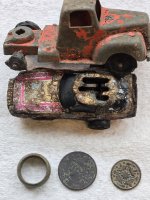Ken S.
Hero Member
Botetourt County, Va. back then went all the way to the Mississippi River; RRG was in Va., I think... MAYBE, Swift & Associates were simply looking from land, leaving from Alexandria County, back then... dunno.
That might have been the Tenn. Area And I'm just guessing at that . Haven't done any research on it.





